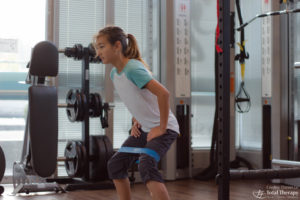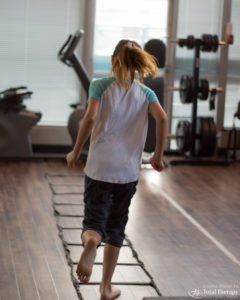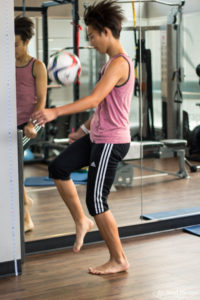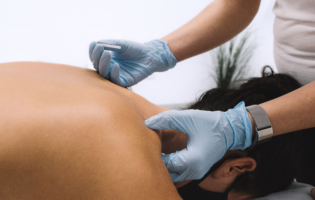Total Therapy Blog

Physical Literacy
Physical literacy?
Remember those kids who were good at everything in PE? During all of grade school, even since kindergarten? And they excelled at multiple diverse sports? That’s what we’re talking about here!
Physical literacy is having the bodily knowledge of basic movement skills (e.g. jumping, landing, even the ability to understand the difference between jogging and sprinting) and the knack of applying them to specific skills (e.g. jumping to the exact place to save a goal, landing to quickly cut past an opponent, and jogging to keep position and conserve energy versus sprinting all-out for a ball).


If we can nurture these “basic movement skills” in children from a young age, they can grow to be confident beyond just the one physical ability. For example: I was so lucky to have grown up running through forests with other kids and getting physically literized (not a real word) all over the place without my knowing. I learned how running and leaping over a stream gets you further (and much less wet!) than coming to a full stop and trying to double-foot it. I learned the muscular coordination for landing without falling forward or rolling my ankle. And I subconsciously translated these skills into leaping after balls in soccer and basketball without undue injury. When I am hiking or trail running, I don’t worry about my footing. Outside the athletic world, I feel completely confident when sprinting after a bus and leaping over a curb in the process.


Ahem, pardon my mini explainabrag. The point is, no matter which direction a child takes in life, physical skills are still relevant in daily activities well past childhood. And the confidence in that skill will help grow self-confidence overall (I mean, I did brag about myself rather publically just now). Physical literacy has many purposes but to me, that bolded statement arguably is the most important of them all. I’d really like to stress that it’s not just for sports-driven children and it does not necessarily develop an interest in sports either. I truly believe physical literacy is beneficial for everyone.
Straying from anecdotal evidence, studies have shown that physical literacy in childhood and adolescence increases bone density, combats obesity and related health issues, promotes cardiovascular health for later in life, and better adherence to lifelong physical activity (clickity click for article). Group physical activity (ranging from organized team sports to unstructured play during recess) gives kids opportunity to develop skills for positive social interactions, which in turn has positive gains in school, communities, and self-esteem (see here). Physical activity and organized sports include situations that bring about a variety of feelings– success, failure, conflict, disappointment, etc. It is an opportune time to learn/practice how to control and manage those strong emotions appropriately in a way that works best for themselves, as well as their peers and coaches (another link here). Physical literacy is also great way to develop cognitive patterns outside of structured classroom time. Conflict resolution, logic, critical thinking, and application of knowledge (last one here).


Is it too late for adults? HECK NAW. It is true the earlier stages of development are the best time to hammer in a new skill… But it’s never too late. There are a few more barriers to climb over, as we adults have learned a few bad patterns along the way. Neuromuscular habits may need to be broken or strengthened; weaknesses show themselves. Although adults will have to go at a slower pace, it’s always a good time to build confidence in physical abilities! With enthusiasm and determination (as well as professional help to avoid injury if you’re ever unsure) anyone can get over those hurdles and improve their physical literacy at any age.








Follow Us!
& Stay Up To Date
BLOG